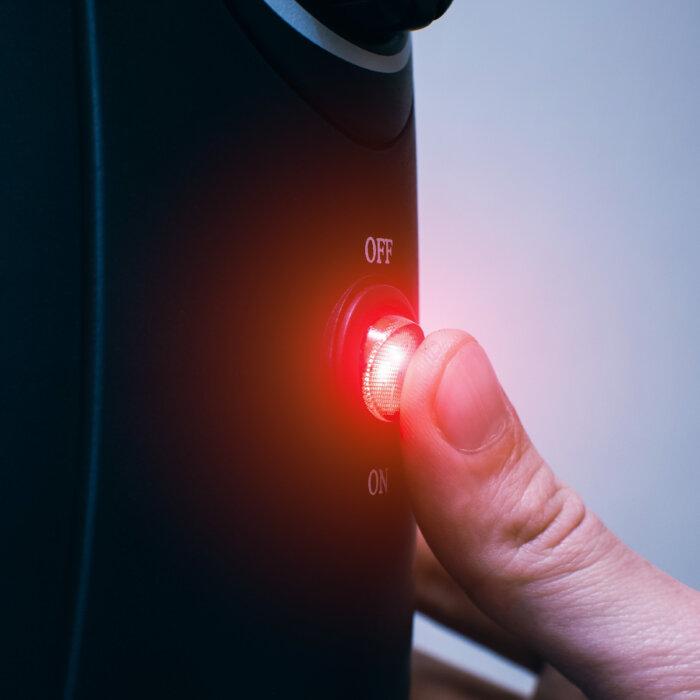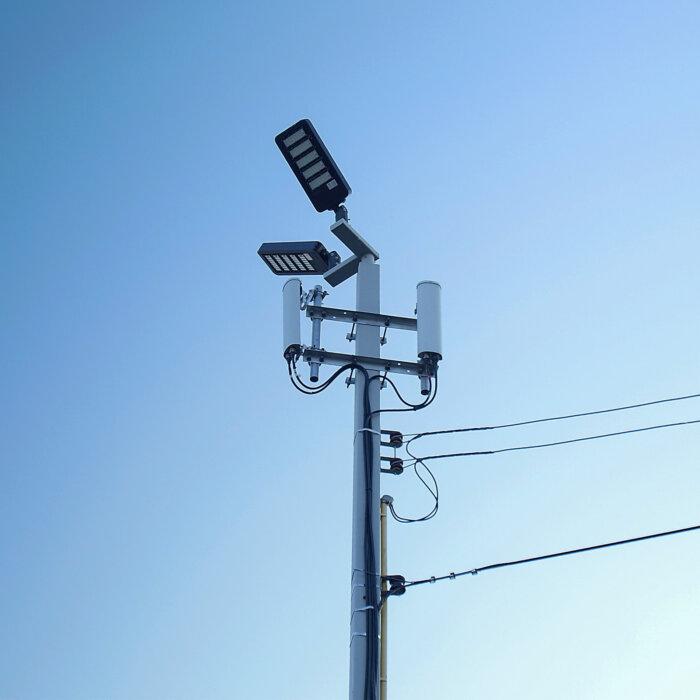Since Motorola introduced the first cordless handheld phone in the early 1970s, cellphones and wireless devices have become ingrained in our lives. They have evolved from allowing basic texting to allowing us to edit videos and use enterprise business software.
Telecommunication networks, which use electromagnetic radiation to transmit information, have also advanced from the now-defunct 1G, which only supported voice calls, to 5G and its high-speed data transfers.
However, alongside these advancements, concerns have emerged regarding potential health effects, with 5G being particularly controversial, in part because of the higher density of transmission towers required.
While telecommunication companies and
regulatory agencies assert that no scientific evidence links cellphone radiation to health problems, experts point to research revealing a host of damaging physiological consequences from exposure. In 2017, 180 international scientists and doctors
petitioned the European Union to conduct an independent assessment of the potential health risks associated with 5G.
But how severe are these risks?
Studies conducted since the 1970s have suggested possible links between cellphone radiation and health issues such as infertility (
pdf),
neuropsychiatric problems, cancer, and inflammation.
Questions About Funding
However, studies on the effects of cellphone radiation have yielded inconsistent findings, with some variations depending on the funding sources of the studies.
Research professor Henry Lai from the University of Washington had
previously examined 200 studies on the biological effects of cellphone-related radiation. He found that approximately half of the studies reported no biological link, while the other half indicated a possible association.
“When you look at the non-industry sponsored research, it’s about three to one—three out of every four papers shows an effect,” Lai said. “Then, if you look at the industry-funded research, it’s almost opposite—only one out of every four papers shows an effect.”
Animal Studies Suggest Harm
Animal studies have implicated potential health risks in 2G, 3G, and 4G technologies.A study published in 2018 by the National Institute of Environmental Health Sciences found that high levels of 2G and 3G radiation were associated with an increased risk of cancer and adverse effects on DNA in rats (
pdf). The study found that rats and mice exposed to that type of radiation exhibited DNA damage in their brains and blood cells, clear evidence of heart tumors, and lower birth weights in the case of prenatal exposure.
But the study
acknowledged limitations due to the use of abnormally high radiation levels that don’t reflect real-life exposure scenarios.
“The exposures used in the studies cannot be compared directly to the exposure that humans experience when using a cellphone,” said John Bucher, a senior scientist at the National Toxicology Program and co-author of the study.
However, increasing exposure levels in a study can expedite research on long-term risks without requiring lifelong studies, Martin Pall, professor emeritus of biochemistry and medical sciences at Washington State University, told The Epoch Times. In other words, giving animals a higher dose over a shorter period of time may give a sense of what human experience with a lower dose over a longer period of time. Conclusive evidence linking cellphone radiation to adverse health effects remains mixed, however.
Brain Tumors and Psychiatric Issues
Studies on cellphone radiation published before the 5G rollout in 2019 demonstrated that placing phones near the ear resulted in the absorption of radiation by brain tissues inside the skull (
pdf).
Some
research has suggested a potential correlation between high cellphone usage and glioblastoma, a type of brain cancer. According to a
Swedish analysis, long-term cellphone users, those who’ve had phones for more than 10 years, face an elevated risk of developing benign tumors. Notably, the risk is highest on the side of the head that comes into contact with the phone.
Nevertheless, the causal relationship remains uncertain.
Studies investigating residents living near cellphone towers and base stations have reported complaints of neuropsychiatric problems, including headaches, memory issues, dizziness, depression, and insomnia.
Is 5G Worse Than Its Predecessors?
Is 5G worse than its predecessors? The short answer is scientists don’t know.
While 2G, 3G, and 4G transmit radio frequency and microwave radiation, 5G emits millimeter wave radiation.
Millimeter wave radiation differs from microwave and radio wave radiation, operating at a higher frequency and facilitating faster signal transmission. However, the potential health effects of millimeter wave radiation remain unknown due to a lack of government-funded studies.
While millimeter waves offer faster speeds, their high frequency makes them weaker and thus
susceptible to blockage by leaves, rainwater, and walls. To ensure complete coverage, telecommunication companies must deploy more 5G antennas. However, since these antennas also transmit 2G, 3G, and 4G signals, the extensive rollout of 5G poses a potential health risk.
Magda Havas, who has a doctorate in environmental toxicology, is an emerita professor specializing in the health effects of electromagnetic radiation, and is a signatory of an EU moratorium, expressed concerns regarding 5G rollouts.
“What they’re doing is they’re rolling out antennas
every roughly 100 meters in urban areas,“ she told The Epoch Times. ”People are going to be exposed to much higher levels of the normal [3G and 4G] frequencies than they were already exposed to, plus the additional millimeter waves that have not been tested for any kind of long-term health effects.”
EMF: The Invisible Hazard
More from this series
Health Effects of 5G Millimeter Waves
The health effects of 5G are still a topic of debate, but Pall and Havas suggest that its millimeter radiation might have the potential to induce health issues.Although 5G’s millimeter waves may be unable to penetrate the body, they can still be absorbed by the skin. Havas said that ultraviolet lights don’t penetrate the body but can cause skin melanomas.
A study conducted in 2020 on 5G radiation demonstrated that the waves could penetrate the skin by approximately 0.9 millimeters when transmitted from 10 centimeters (4 inches) away.
Although this depth is shallower compared to 4G and 3G, the radiation intensity was significantly higher. Furthermore, 0.9 millimeters may not even be considered shallow. According to
a 2008 study on millimeter waves, a penetration depth of 0.65 millimeters is sufficient “to affect most skin structures located in the epidermis and dermis,” the authors wrote.
“
It’s been shown in a number of different studies that if you look at different kinds of cells—and we have many different types of cells in our body—you'll find that some cell types are much much more sensitive to EMF (radiation) than others,” Pall said.
He further emphasized that biological heterogeneity must be considered and that simple physics can’t be used to make accurate predictions about biological effects.
While the long-term health effects of 5G remain unknown, Pall has conducted research showing that millimeter waves can trigger biological responses by altering the cells’ electrical charges.
As telecommunications networks evolve and 5G promises faster speeds and greater connectivity, the need to understand the effects on human health becomes increasingly important. The debate surrounding the potential health effects of 5G technology continues to be a subject of concern and controversy.
Some experts observed an increase in microwave syndrome in recent decades. Is it an actual disease, and does it relate to the cellphone radiation surrounding us?











